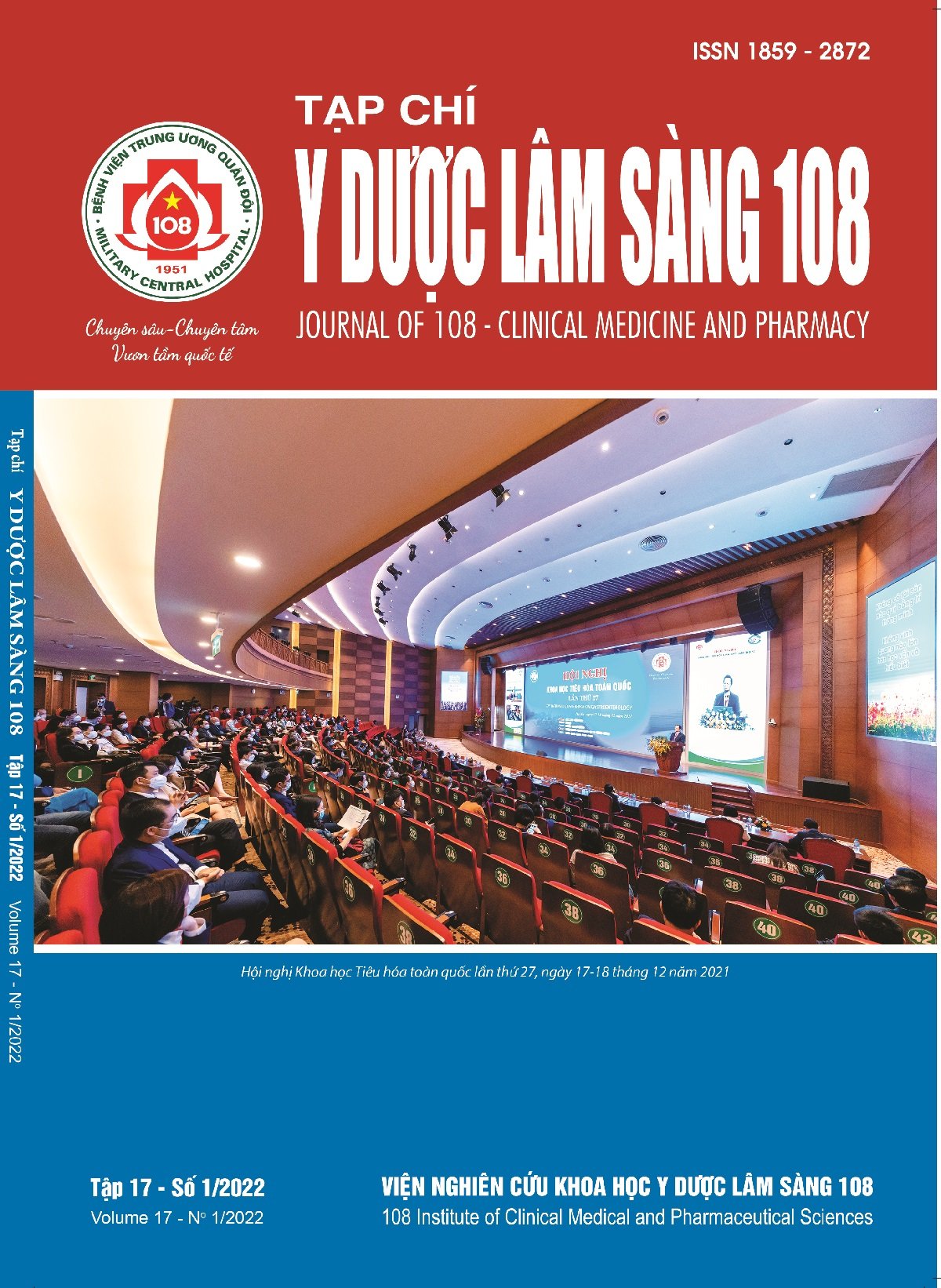Evaluation of results of using forehead skin flaps with vascular pedicle in the treatment of nasal soft tissue defect
Main Article Content
Keywords
Abstract
Objective: To estimate the results of using forehead skin flaps with vascular pedicle for treatment of the nasal soft tissue defect. Subject and method: Retrospective and prospective studies on 48 patients suffered from nasal soft-tissue defects due to different causes who underwent plastic surgery using forehead skin flap at 103 Military Hospital and at 108 Military Central Hospital from 2014 to 2020. Result: The most frequent injured location was the ala of nose, accounting for 38.8% and the least common was the columella that found in 13.4% of patients. Cutaneous and subcutaneous defects accounted for 4.5% of all encounters; through and through defects were accounted for 52.3% of enrollment. 89.6% of patients suffered with large trauma area (≥ 2cm2). Post-surgery, the rate of completely survived skin flaps was 89.6%, adequate coverage in units accounted for 64.6%. The rate of wound healing without further surgery was 85.4% and 83.3% of patient recover without any complication. Secondary deformities that heavily affect function accounted for 6.3%. And after the suture removal, most of patients in the study group had good results, accounting for 66.7%; fair results accounted for 22.9%, and at poor level accounted for 6.3%. Conclusion: Forehead skin flap with vascular pedicle is a suitable and highly effective material for nasal defect.
Article Details
References
2. Sangavi BA (2012) Congenital alar defect, reconstruction with auricular composite graft. Am J Med Sci 5: 205-208.
3. Ahmed Ali (2021) Aesthetic unit-based reconstruction of facial defects with local flaps after surgical excision of basal cell carcinoma. The Egyptian Journal of Plastic and Reconstructive Surgery 45: 121-131.
4. Bhatt Y, Vyas K, Nakade D et al (2006) Reconstruction of nasal defects our three years experience. Indian J Otolaryngol Head Neck Surg 58(1): 51-56.
5. Bùi Văn Cường (2015) Đánh giá kết quả phẫu thuật tạo hình tổn thương khuyết đầu mũi, cánh mũi. Đại học Y Hà Nội.
6. Phạm Thị Việt Dung (2017) Nghiên cứu giải phẫu và ứng dụng hệ mạch thái dương nông trong phẫu thuật tạo hình. Đại học Y Hà Nội.
 ISSN: 1859 - 2872
ISSN: 1859 - 2872
